Step into the mystical world of King Arthur and the Knights of the Round Table, where legends blend with history and imagination knows no bounds. This captivating tale has captured the hearts and minds of people for centuries, inspiring countless works of art, literature, and film. From the enigmatic origins of King Arthur himself to the noble knights who pledged their loyalty to him, the story is steeped in mystery, honor, and adventure. Join us on a journey through the ancient legends and historical theories that surround the legendary figure of King Arthur and his fabled kingdom of Camelot. Discover the courageous knights who embarked on quests for the Holy Grail and the tragic love story of Lancelot and Guinevere. Explore the enchanting city of Camelot and wield the mythical Excalibur, the legendary sword of King Arthur. Delve into the works of Geoffrey of Monmouth, Thomas Malory, and Tennyson, who immortalized the Arthurian legends in literature. Uncover the modern interpretations and the Arthurian revival that continues to captivate audiences to this day. So, grab your armor and get ready to embark on a journey fit for a king.
Contents
- The Origins of King Arthur
- Who Were the Knights of the Round Table?
- Camelot: The Fabled Kingdom
- Arthurian Legends in Literature
- Modern Interpretations
- Conclusion
- Frequently Asked Questions
- References
-
Frequently Asked Questions
- What are the main characters in the Legend of King Arthur and the Knights of the Round Table?
- Is King Arthur a historical figure or a mythological character?
- What is the significance of the Round Table in King Arthur’s court?
- What is the Holy Grail and why is it important?
- Who was the most famous knight of the Round Table?
- What is the story behind the legendary sword Excalibur?
- Who was the trusted advisor and magician in King Arthur’s court?
- What is Camelot and why is it significant in the Arthurian legends?
- How has the legend of King Arthur influenced modern literature and pop culture?
- What is the legacy of King Arthur and the Knights of the Round Table?
- References
- Read More
The Origins of King Arthur
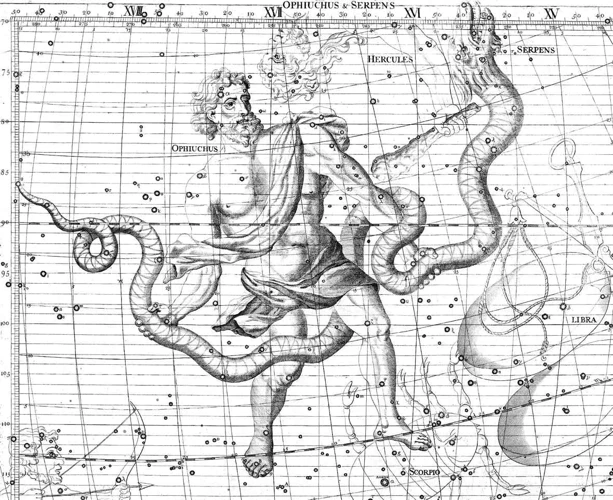
The Origins of King Arthur
The story of King Arthur is shrouded in mystery and has been the subject of speculation and debate for centuries. The Ancient Legends: According to ancient legends, King Arthur was born to Uther Pendragon and Igraine of Cornwall. It is said that the wizard Merlin played a vital role in Arthur’s conception and upbringing. The boy Arthur, unaware of his true identity, pulled the sword Excalibur from the stone, proving himself to be the rightful king of Britain. The Historical Theories: While the legends paint a vivid and fantastical picture, historians have put forth several theories about the origins of King Arthur. One theory suggests that Arthur was a real historical figure, possibly a Romano-British war leader who fought against the invading Saxon armies in the 5th or 6th century. Other theories suggest that Arthur was a composite character based on several different leaders from that time period. Despite the lack of concrete historical evidence, the allure of King Arthur and his mythical kingdom continues to captivate the imagination of people around the world.
The Ancient Legends
The Ancient Legends
The ancient legends surrounding King Arthur are a tapestry of mythical tales and heroic feats. These legends tell of a time when Britain was in turmoil and a destined hero emerged to bring unity and peace to the land. According to legend, Arthur was born to King Uther Pendragon and Igraine of Cornwall. However, he was raised in secrecy by the wise and mysterious wizard Merlin, who knew of Arthur’s true lineage and destiny. One of the most famous stories is the tale of Arthur pulling the sword Excalibur from the stone, an act that proved his rightful claim to the throne. This legendary feat established Arthur as the chosen king and the leader who would protect Britain from its enemies. With Excalibur in his possession, Arthur went on to form the Knights of the Round Table, a fellowship of valiant warriors who swore to uphold the ideals of chivalry and protect the realm. These tales of Arthur’s noble birth, his encounter with Merlin, and his possession of Excalibur serve as the foundation for the enduring legend of the once and future king.
The Historical Theories
The Historical Theories
The origins of King Arthur have long been a subject of fascination and speculation. Historians and scholars have put forth various theories to unravel the historical context surrounding this legendary figure.
1. Romano-British War Leader: One prominent theory suggests that King Arthur was a real historical figure, a Romano-British war leader who fought against the invading Saxon armies during the 5th or 6th century. This theory draws upon the accounts of early Welsh and Celtic literature that depict Arthur as a brave warrior defending Britain against foreign invaders.
2. Composite Character: Another theory posits that King Arthur may have been a composite character, created through a merging of multiple historical figures. This theory suggests that the tales of different leaders who fought against the Saxons were combined over time to form the legendary figure of Arthur.
3. Mythological Symbol: There is also a theory that suggests Arthur could have been purely a mythical symbol rather than an actual historical figure. Some argue that Arthur represents the archetype of the righteous and virtuous king, embodying the ideals of leadership, chivalry, and heroism.
These historical theories provide intriguing possibilities for understanding the origins of King Arthur. Whether a real historical figure, a composite character, or a mythological symbol, the legend of King Arthur and his Knights of the Round Table continues to captivate our imagination, inviting us to journey into a world of knights, quests, and heroic deeds.
Who Were the Knights of the Round Table?
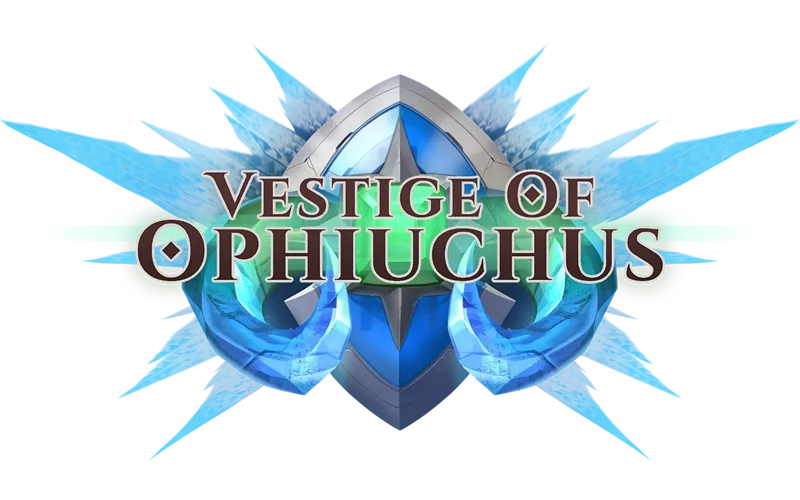
Who Were the Knights of the Round Table?
The Knights of the Round Table were a legendary group of noble warriors who stood by King Arthur’s side and exemplified chivalry, honor, and valor. The Legendary Knights: The most renowned knight among them was Sir Lancelot, known for his extraordinary skill in battle and his forbidden love for Queen Guinevere. Other notable knights included Sir Gawain, known for his loyalty and courage; Sir Percival, who embarked on the quest for the Holy Grail; and Sir Galahad, the purest and most virtuous knight who ultimately achieved the Holy Grail. These knights, along with many others, took an oath of loyalty to King Arthur and dedicated themselves to upholding justice and protecting the realm. The Quest for the Holy Grail: One of the most significant quests undertaken by the Knights of the Round Table was the search for the Holy Grail, the legendary cup used by Jesus Christ during the Last Supper. This quest was not only a physical journey but also a spiritual quest for redemption and enlightenment. It tested the knights’ bravery, virtue, and faith. The Betrayal of Lancelot and Guinevere: Despite the camaraderie and loyalty among the knights, the tragic love affair between Sir Lancelot and Queen Guinevere eventually led to the downfall of the Round Table. The betrayal and the subsequent civil war that ensued marked the end of the Arthurian era. The story of the Knights of the Round Table continues to inspire and captivate audiences with tales of chivalry, adventure, and the eternal struggle between love and duty.
The Legendary Knights
The Legendary Knights
The Knights of the Round Table are an integral part of the King Arthur legend, known for their unwavering loyalty and noble deeds. These legendary knights were chosen for their exceptional skill, bravery, and chivalry. Sir Lancelot, the most renowned of all the knights, was known for his extraordinary swordsmanship and undying love for Queen Guinevere, which ultimately led to the downfall of Camelot. Sir Gawain, known for his prowess in battle, was often depicted as a model of knightly virtue. Sir Percival, on the other hand, was renowned for his quest for the Holy Grail, a sacred relic associated with the Last Supper. Sir Galahad, believed to be the purest of all the knights, was the only one deemed worthy to achieve the Holy Grail. Other notable knights include Sir Bedivere, who played a crucial role in returning Excalibur to the Lady of the Lake, and Sir Tristan, known for his tragic love affair with Isolde. Each knight had their own unique qualities and contributed to the rich tapestry of Arthurian legends. With their code of honor and devotion, the knights of the Round Table exemplify the ideals of chivalry and continue to inspire both admiration and fascination.
The Quest for the Holy Grail
The fabled Holy Grail is one of the most enduring and elusive symbols of the Arthurian legends. This sacred artifact is believed to be the cup used by Jesus Christ during the Last Supper and holds immense spiritual power. Embarking on the Quest: In the Arthurian legends, King Arthur and his noble knights embark on a quest to find the Holy Grail, believed to bring healing, enlightenment, and eternal life to those who possess it. This quest becomes a central theme in the Arthurian stories, as Arthur’s knights face numerous challenges, tests, and moral dilemmas in their search for the Grail. The Challenges and Perils: The knights encounter mystical beings, treacherous lands, and formidable adversaries in their quest. The most famous knight associated with the Holy Grail is Sir Galahad, known for his purity and righteousness. It is said that he is the only knight worthy to achieve the ultimate goal of finding the Grail and ascending to spiritual enlightenment. The Symbolism: The quest for the Holy Grail is laden with symbolism, representing the pursuit of spiritual enlightenment, self-discovery, and the journey of the soul. It also embodies the ideals of chivalry, honor, and the pursuit of higher virtues. The story of the Holy Grail continues to captivate audiences and has inspired countless interpretations in literature, art, and film. Whether a physical object or a metaphorical representation, the Holy Grail remains a powerful symbol of faith, redemption, and the eternal search for meaning.
The Betrayal of Lancelot and Guinevere
The Betrayal of Lancelot and Guinevere
One of the most captivating and tragic tales from the Arthurian legends is the story of the betrayal of Lancelot and Guinevere. Lancelot, the most renowned and noble knight of the Round Table, was known for his unwavering loyalty and devotion to King Arthur. However, fate had a different path in store for him. The Forbidden Love: Lancelot fell deeply in love with Queen Guinevere, the wife of King Arthur. Their forbidden love escalated, and they engaged in a passionate affair, betraying their vows and undermining the unity of the Round Table. The Discovery and Consequences: The affair was eventually discovered by Mordred, Arthur’s treacherous nephew, who seized the opportunity to sow discord and bring about the downfall of Camelot. The revelation of Lancelot and Guinevere’s betrayal shattered the harmony of the knights, and their actions set in motion a series of events that led to the decline of the once glorious kingdom. The Fall of Camelot: With their affair exposed, Lancelot and Guinevere faced the wrath of King Arthur, leading to a bitter conflict and Arthur’s ultimate defeat at the Battle of Camlann. Their betrayal not only ended the golden age of Camelot but also marked the tragic end of an era. The story of Lancelot and Guinevere serves as a cautionary tale, reminding us of the destructive power of forbidden love and the consequences that come with betraying trust and loyalty.
Camelot: The Fabled Kingdom
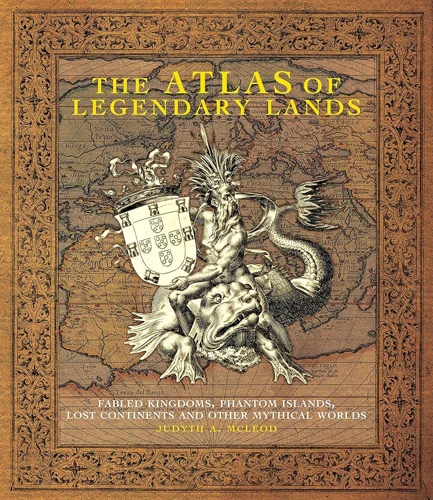
Camelot: The Fabled Kingdom
Within the Arthurian legends, Camelot stands as a symbol of a utopian kingdom, a place of chivalry, and a beacon of hope. The Mythical City: Camelot is often portrayed as a grand and magnificent city, ruled by King Arthur and his beloved queen, Guinevere. It is described as a place of beauty and nobility, where the virtues of honor, loyalty, and justice are upheld. The court of Camelot is said to have been a hub of activity, filled with knights, damsels, and the enchanting presence of Merlin. The Legendary Excalibur: One of the most iconic elements of Camelot is the legendary sword Excalibur. According to the legends, Excalibur was given to Arthur by the Lady of the Lake, a mysterious figure associated with magic and enchantment. This sword, embedded with magical powers, symbolized Arthur’s rightful claim to the throne and his role as a just and benevolent ruler. It is said that only the true king of Britain could wield Excalibur and its scabbard, which granted invincibility in battle. Despite Camelot being the epitome of a utopian kingdom, its downfall was ultimately brought about by the betrayal of Lancelot and Guinevere, which plunged the kingdom into chaos and marked the end of an era. Despite its mythical nature, the legacy of Camelot continues to inspire and captivate people across generations, reminding us of the pursuit of noble ideals and the importance of a just and honorable society.
The Mythical City
The Mythical City
At the heart of the Arthurian legends lies the enchanting city of Camelot, a place of wonder and grandeur. Camelot: Often depicted as a utopian kingdom, Camelot represents the pinnacle of civilization and chivalry. In the legends, it serves as the seat of power for King Arthur and his knights. It is said to be located somewhere in the British Isles, though its exact location remains a mystery. The Legendary Excalibur: Within the walls of Camelot, King Arthur wielded the legendary sword, Excalibur, a symbol of his rightful claim to the throne. According to the legend, Excalibur was forged on the mystical island of Avalon and possessed extraordinary powers. It is said that only the true and worthy king could successfully withdraw the sword from the stone. Camelot and Excalibur have become iconic symbols of a golden age of chivalry and honor. Despite its mythical nature, Camelot continues to inspire imaginations and serves as a reminder of the enduring power of noble ideals.
The Legendary Excalibur
The Legendary Excalibur
Excalibur, the legendary sword of King Arthur, is a symbol of power, nobility, and destiny. According to the Arthurian legends, Excalibur was a sword unlike any other, embedded in a stone, with a prophecy stating that only the rightful king could pull it free. Young Arthur, unaware of his true lineage, accomplished this feat effortlessly, proving his royal heritage. Excalibur possessed extraordinary qualities, said to grant its wielder immense strength and skill in battle. The sword became a significant emblem of Arthur’s divine right to rule and his just and honorable reign. Legends depict Excalibur as a weapon of invincibility, capable of slaying enemies with a single blow and even protecting its wielder from harm. In some versions of the tales, Excalibur had a magical scabbard that provided protection against wounds, making Arthur nearly invulnerable in battle. The sword and its scabbard have become intertwined with the mystique of King Arthur, symbolizing his heroic status and his role as the chosen leader of his people. Today, Excalibur continues to capture the imagination, inspiring countless stories, films, and representations in various media. It serves as a reminder of the enduring power of myth and the legend that surrounds the legendary King Arthur.
Arthurian Legends in Literature
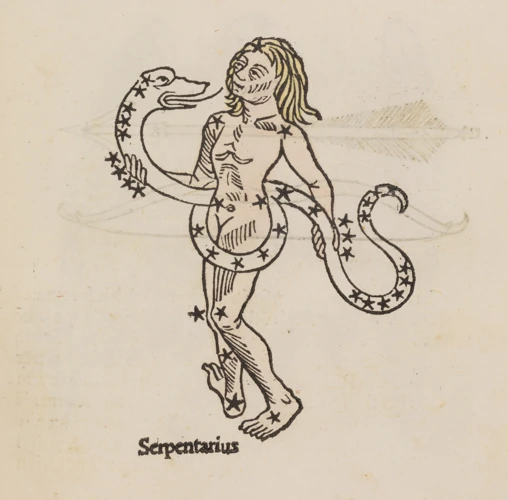
Arthurian Legends in Literature
The rich and timeless tales of King Arthur and the Knights of the Round Table have left an indelible mark on the world of literature. Geoffrey of Monmouth’s Works: One of the earliest and most influential works about King Arthur is Geoffrey of Monmouth’s “Historia Regum Britanniae” (History of the Kings of Britain). Written in the 12th century, this work popularized the story of Arthur as a great king who fought against the invading Saxons and established a golden age in Britain. Thomas Malory’s Le Morte d’Arthur: Another notable work is Thomas Malory’s “Le Morte d’Arthur” (The Death of Arthur) which was published in the 15th century. This comprehensive compilation of Arthurian legends presented the story of King Arthur from his birth to his final battle and demise. It is considered one of the most significant works of English literature. Tennyson’s Idylls of the King: In the 19th century, Alfred Lord Tennyson gave new life to the Arthurian legends with his epic poem “Idylls of the King”. Tennyson’s work focused on the ideals of chivalry, honor, and the tragic downfall of Arthur’s kingdom. These literary works have woven a tapestry of knights, quests, love, and betrayal, inspiring countless authors and enchanting readers through the ages.
Geoffrey of Monmouth’s Works
Geoffrey of Monmouth was a medieval writer known for his historical accounts and influential works related to the Arthurian legends. His most famous work, “Historia Regum Britanniae” (History of the Kings of Britain), written in the 12th century, introduced the character of King Arthur to a wider audience. In this text, Geoffrey portrayed Arthur as a heroic and legendary figure, emphasizing his role as a great king who united Britain and fought against the invading Saxons. He also introduced other iconic elements such as Merlin the wizard and the love story of Arthur and Guinevere. Geoffrey’s work became immensely popular and inspired subsequent authors and poets to delve deeper into the Arthurian legends. While some historians dismiss Geoffrey’s writings as fictional, his contributions were crucial in shaping the perception of King Arthur and the mythology surrounding him. His work laid the foundation for future interpretations and helped solidify the image of King Arthur as a legendary hero in British literature and folklore.
Thomas Malory’s Le Morte d’Arthur
Thomas Malory’s Le Morte d’Arthur
One of the most famous literary works that immortalized the Arthurian legends is . Completed in 1485, this epic compilation of tales brought together various Arthurian stories and became a foundational text for future Arthurian literature. Malory’s work presents a comprehensive narrative of King Arthur’s life, from his conception and birth to the tragic downfall of Camelot. The stories featured in Le Morte d’Arthur include the sword in the stone, the quest for the Holy Grail, the chivalric adventures of Lancelot and Gawain, and the betrayal of King Arthur by his own son, Mordred. Malory’s writing style exudes a sense of grandeur, utilizing archaic language and poetic descriptions to evoke a sense of medieval splendor. Le Morte d’Arthur cemented King Arthur and his Knights of the Round Table as iconic figures in literature, inspiring future writers to continue crafting tales of bravery, romance, and honor. The enduring popularity of Malory’s work is a testament to the timeless appeal of the Arthurian legends.
Tennyson’s Idylls of the King
Tennyson’s Idylls of the King
Alfred, Lord Tennyson, one of the most renowned poets of the Victorian era, made significant contributions to the Arthurian legend through his work, Idylls of the King. Comprised of a series of narrative poems, Tennyson’s masterpiece delves deep into the mythology of King Arthur and his knights. The Revival of Arthurian Legends: Tennyson’s collection, published in the 19th century, played a pivotal role in reviving interest in Arthurian legends during the Victorian period. The poems, infused with Tennyson’s exquisite imagery and emotional depth, brought the characters of King Arthur, Lancelot, Guinevere, and the Knights of the Round Table to life for a new generation of readers. The Themes Explored: Tennyson’s Idylls of the King explores various themes, including the pursuit of personal and moral ideals, the tension between duty and desire, and the downfall of Arthur’s utopian kingdom. Each poem in the collection focuses on a particular aspect of the Arthurian legend, with “The Lady of Shalott,” “Sir Galahad,” and “Morte d’Arthur” being among the most well-known. Literary Legacy: Tennyson’s work not only contributed to the popularity of the Arthurian legends but also influenced subsequent interpretations and adaptations of the King Arthur mythos in literature, theater, and other forms of media. Tennyson’s Idylls of the King remains a classic depiction of Arthurian lore, showcasing the timeless allure of honor, chivalry, and tragic destiny woven into the fabric of King Arthur’s legendary tale.
Modern Interpretations

Modern Interpretations
The timeless tale of King Arthur and the Knights of the Round Table has undergone numerous interpretations and adaptations in modern times, breathing new life into the legendary story. The Arthurian Revival: The 19th century witnessed a significant revival of interest in Arthurian legends. Writers, poets, and artists embraced the Arthurian themes, reigniting fascination with the legendary king. This revival was fueled by Alfred, Lord Tennyson’s epic poem “Idylls of the King,” which portrayed Arthur as a noble and just ruler, while exploring themes of chivalry and love. Arthurian Themes in Fantasy Literature: In more recent times, the Arthurian legends have found a prominent place in fantasy literature. Authors like Marion Zimmer Bradley, T.H. White, and Bernard Cornwell have crafted their own versions of the Arthurian world, presenting unique interpretations of the characters and the fabled kingdom of Camelot. These modern retellings often delve deeper into the complex relationships between the characters and explore the darker, more intricate aspects of the Arthurian saga. The rise of fantasy television shows and movies has also contributed to the continued popularity of Arthurian tales, with productions like “Merlin” and “King Arthur: Legend of the Sword” captivating audiences around the world. The enduring appeal of King Arthur and his knights in modern interpretations serves as a testament to the timeless power of Arthurian legends to captivate and inspire new generations.
The Arthurian Revival
The Arthurian Revival
The Arthurian legends experienced a notable revival during the 19th and 20th centuries, breathing new life into the tales of King Arthur and the Knights of the Round Table. This revival was fueled by a renewed interest in medieval literature, folklore, and the romanticized ideals of chivalry and honor. William Wordsworth: One of the pioneers of the Arthurian revival was the poet William Wordsworth, whose work emphasized the spiritual and moral aspects of the Arthurian legends. He sought to capture the mythical and heroic nature of King Arthur through his poetic verses. Victorian Era: The Arthurian revival reached its peak during the Victorian era, where numerous authors, artists, and composers delved into the Arthurian tales. Alfred, Lord Tennyson’s poetic collection “Idylls of the King” became immensely popular, narrating the rise and fall of King Arthur and the ideals of honor and love. Fellow poet Algernon Charles Swinburne also contributed to the revival with his works centered around the Arthurian legends. Twentieth Century: The Arthurian revival continued to flourish into the 20th century, with authors such as T.H. White revitalizing the legends with his novel “The Once and Future King.” Additionally, the advent of cinema allowed for the visual representation of the Arthurian tales, with films like “Excalibur” and “Camelot” captivating audiences worldwide. The Arthurian revival not only preserved the legends for future generations but also paved the way for their continued popularity and adaptation in modern times.
Arthurian Themes in Fantasy Literature
Arthurian Themes in Fantasy Literature
The timeless allure of the Arthurian legends has had a profound influence on the world of fantasy literature. Authors, captivated by the rich tapestry of characters and stories, have woven Arthurian themes into their works, creating magical and immersive worlds. The Arthurian Revival: The 19th century saw a revival of interest in the Arthurian legends, spurred on by the works of Alfred, Lord Tennyson and other Romantic writers. This renewed fascination sparked a wave of fantasy literature inspired by the Arthurian tales. Arthurian Themes and Motifs: Fantasy authors often incorporate key elements from the Arthurian legends, such as chivalry, quests, and the struggle between good and evil. These themes provide a familiar and enchanting backdrop against which new stories unfold. Fantasy Series with Arthurian Influences: One of the most notable fantasy series with Arthurian influences is “The Once and Future King” by T.H. White. This retelling of the Arthurian legends explores themes of leadership, morality, and the search for identity. Another popular series, “The Wheel of Time” by Robert Jordan, presents a vast and intricate world inspired in part by the Arthurian myths. With its knights, prophecies, and battles, it captures the essence of the Arthurian tales in a uniquely fantastical setting. Whether it’s through subtle references or intricate retellings, the enduring appeal of the Arthurian legends continues to shape and inspire the realms of fantasy literature.
Conclusion
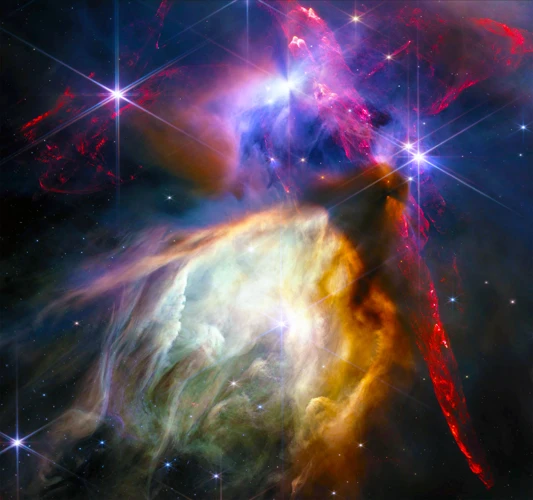
Conclusion
The legend of King Arthur and the Knights of the Round Table is a timeless tale that has captured the imagination of people throughout history. It is a story that combines the elements of history, mythology, honor, and adventure. From the enigmatic origins of King Arthur to the chivalrous knights who pledged their loyalty, the legend has stood the test of time, inspiring numerous works of art, literature, and film. Whether King Arthur was a historical figure or a mythical creation, his story has become an integral part of Western culture.
Throughout the ages, the Arthurian legends have been passed down through various sources, each adding its own twist to the narrative. Geoffrey of Monmouth’s works in the 12th century helped popularize the legend, while Thomas Malory’s “Le Morte d’Arthur” consolidated and standardized many of the tales. Lord Tennyson’s poetic masterpiece “Idylls of the King” further immortalized the Arthurian legends in the 19th century.
Modern interpretations and adaptations of the Arthurian legends have kept the story alive and relevant in contemporary culture. The Arthurian revival, particularly in the 20th century, has seen an upsurge of interest in the tales of King Arthur, leading to the creation of new literary works, theater productions, and films. The themes of honor, chivalry, and the pursuit of a just and noble cause continue to resonate with audiences today.
In conclusion, the legend of King Arthur and the Knights of the Round Table is a testament to the enduring power of storytelling. Whether one believes in the historical existence of King Arthur or embraces the mythical aspects of the tale, the message of bravery, loyalty, and the pursuit of a better world transcends time. The legend continues to inspire and captivate, reminding us of the timeless values and ideals that we strive to uphold in our own lives.
Frequently Asked Questions
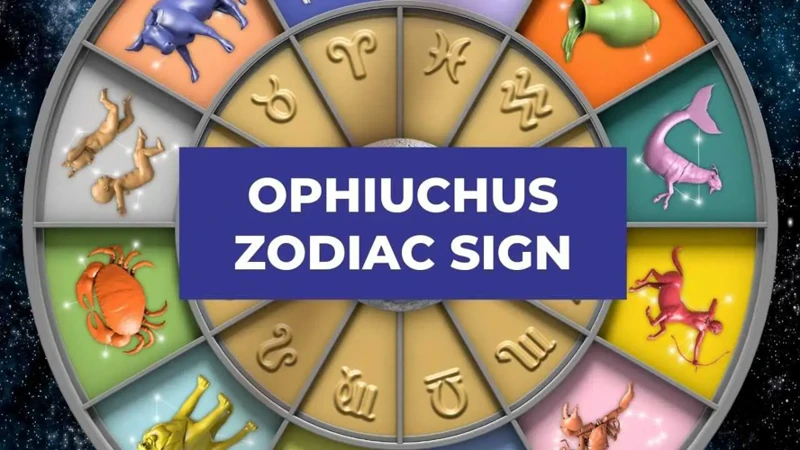
FAQs about the Legends of King Arthur and the Knights of the Round Table
1. What is the Holy Grail, and why is it important in Arthurian legends?
The Holy Grail is believed to be the cup or dish used by Jesus Christ during the Last Supper. In Arthurian legends, it became a symbol of purity and divine power, representing the ultimate spiritual quest and redemption.
2. Was Camelot a real place?
The existence of Camelot as a physical place is highly debated. It is often perceived as a mythical city, depicted as King Arthur’s capital and the center of his kingdom’s power and justice.
3. Who were King Arthur’s parents?
According to the legends, King Arthur’s father was Uther Pendragon, and his mother was Igraine of Cornwall.
4. What role did Merlin play in King Arthur’s life?
Merlin was a wise and powerful wizard who acted as Arthur’s advisor, protector, and guide. He played a significant role in Arthur’s upbringing and helped shape his destiny as the future king of Britain.
5. Who were the Knights of the Round Table?
The Knights of the Round Table were a group of noble and valiant knights who served King Arthur. They were known for their chivalry, courage, and commitment to upholding the ideals of the kingdom.
6. Was Lancelot the greatest knight of the Round Table?
Lancelot is often portrayed as one of the greatest knights of the Round Table. His incredible skill in combat, unwavering loyalty to Arthur, and forbidden love affair with Queen Guinevere are significant aspects of his character.
7. What is the significance of Excalibur in Arthurian legends?
Excalibur is the legendary sword associated with King Arthur. It is often depicted as a symbol of Arthur’s rightful kingship and his ability to unite and protect the land.
8. What are some notable literary works based on the Arthurian legends?
Notable literary works include Geoffrey of Monmouth’s “Historia Regum Britanniae,” Thomas Malory’s “Le Morte d’Arthur,” and Alfred Lord Tennyson’s “Idylls of the King.” These works have contributed to the enduring popularity and interpretation of the Arthurian legends.
9. Are there any modern interpretations or adaptations of the Arthurian legends?
Yes, the Arthurian legends have inspired numerous modern interpretations and adaptations. These range from movies and TV series to fantasy novels and theatre productions. Some popular examples include the film “Excalibur” and the TV series “Merlin.”
10. Why do the legends of King Arthur continue to resonate with audiences today?
The legends of King Arthur evoke a sense of adventure, heroism, and a longing for a more just and noble world. They explore timeless themes of honor, loyalty, and the never-ending quest for truth, making them relevant and captivating to audiences of all generations.
References
- King Arthur & the Knights of the Round Table | History, Legend …
- Round Table | Medieval Knights, Camelot & Legends
- King Arthur & The Knights of the Round Table Summary
Frequently Asked Questions

What are the main characters in the Legend of King Arthur and the Knights of the Round Table?
The main characters in the Legend of King Arthur and the Knights of the Round Table include King Arthur, Queen Guinevere, Merlin the Magician, Sir Lancelot, Sir Gawain, Sir Galahad, Sir Percival, and Sir Tristan.
Is King Arthur a historical figure or a mythological character?
King Arthur is a legendary figure who is believed to be a combination of historical and mythical elements. While there is no concrete historical evidence of his existence, his legend has been passed down through centuries in folklore and literature.
What is the significance of the Round Table in King Arthur’s court?
The Round Table symbolizes equality and unity among the knights. It was designed in a round shape so that no knight would have a greater position of authority over the others. This fostered a sense of camaraderie and fairness among King Arthur’s knights.
What is the Holy Grail and why is it important?
The Holy Grail is believed to be the cup used by Jesus Christ during the Last Supper. In the Arthurian legends, it is a symbol of purity and divine power. The search for the Holy Grail represents the pursuit of spiritual enlightenment and the ultimate quest for truth.
Who was the most famous knight of the Round Table?
Sir Lancelot is often regarded as the most famous knight of the Round Table. He is known for his bravery, skill in battle, and his forbidden love affair with Queen Guinevere, which ultimately leads to the downfall of the Round Table.
What is the story behind the legendary sword Excalibur?
Excalibur is the mythical sword associated with King Arthur. According to the legend, Arthur received the sword from the Lady of the Lake, who emerged from the depths of the water to offer him the weapon. Excalibur is said to possess exceptional magical powers and is a symbol of Arthur’s rightful claim to the throne.
Who was the trusted advisor and magician in King Arthur’s court?
Merlin the Magician served as King Arthur’s trusted advisor and mentor. He possessed great wisdom and foresight, and was instrumental in guiding Arthur on his path to becoming a legendary king. Merlin’s magical abilities also played a crucial role in many of the Arthurian adventures.
What is Camelot and why is it significant in the Arthurian legends?
Camelot is the fabled city and court of King Arthur. It is depicted as a utopian kingdom characterized by harmony and chivalry. Camelot represents the ideals of Arthurian legends and serves as a symbol of the quest for a better world. Its existence represents a time of greatness and noble values.
How has the legend of King Arthur influenced modern literature and pop culture?
The legend of King Arthur has had a profound impact on modern literature and pop culture. It has inspired countless adaptations, from books to movies, and has become a staple in the fantasy genre. The themes of chivalry, honor, and the quest for a higher purpose continue to resonate with audiences worldwide.
What is the legacy of King Arthur and the Knights of the Round Table?
The legacy of King Arthur and the Knights of the Round Table lies in their embodiment of noble values and the pursuit of a just and harmonious society. Their stories continue to captivate audiences, serving as a reminder of the enduring power of myth and the importance of upholding virtues such as loyalty, bravery, and justice.
References
- Legends of King Arthur and the knights of the Round Table
- Camelot, King Arthur & the Knights of the Round Table






